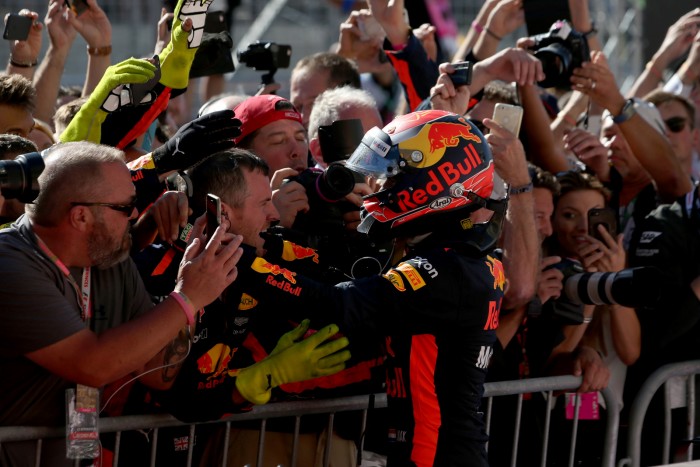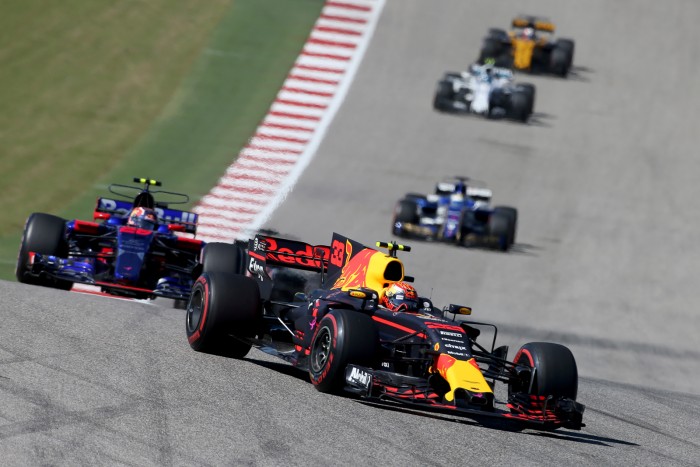Max visits NASA Johnson Space Center: “Really cool”
Published on 19 October 2017 by Niels Hendrix
It's often said that Formula 1 really is a bit like rocket science – an endeavour in which elite pilots are backed by some fairly intricate science and simulation in pursuit of a complex target. It's not a comparison Red Bull Racing had the chance to put to the test before now but this week's trip to Texas provided the ideal opportunity in the shape of a pre-race journey to see some actual space tech – at NASA's Johnson Space Center.
The Johnson Space Center is one of the original homes of space flight in the US and has been training astronauts for work off-world for more than 50 years. It's also the home of Mission Control, the command centre responsible for all manned space missions since the Gemini projects of the mid-1960s. It was from here that the Apollo, Skylab and Space Shuttle missions were run.
It's also the place where astronauts from all over the world get trained and, with the idea in mind that F1 drivers are not far removed from elite fighter pilots, we wanted to see if our drivers saw any parallels between the worlds of racing and of space flight.
-1b.jpg) First up was the Active Response Gravity Offload System (ARGOS) system, designed to simulate reduced gravity environments using a system similar to an overhead bridge crane. The basic function is to harness a pilot or payload to an overhead crane, which via a range of sensors, tracks motion and simulates weightlessness. What's the goal of the system for astronauts? To support testing, development, and training for future missions to the Moon, Mars, asteroids, or any other celestial destination.
First up was the Active Response Gravity Offload System (ARGOS) system, designed to simulate reduced gravity environments using a system similar to an overhead bridge crane. The basic function is to harness a pilot or payload to an overhead crane, which via a range of sensors, tracks motion and simulates weightlessness. What's the goal of the system for astronauts? To support testing, development, and training for future missions to the Moon, Mars, asteroids, or any other celestial destination.
NASA is currently testing concepts for a new generation of surface exploration vehicles for use on the Moon and Mars and Max Verstappen and Daniel Ricciardo were given a chance to get behind the wheel of one such vehicle.
The version driven by Max and Daniel features a cabin mounted on a chassis with wheels that can pivot 360 degrees and drive about 10kph in any direction. It's about the size of a pickup truck (with 12 wheels) and can house two astronauts for up to 14 days with sleeping and sanitary facilities. The frame was developed in conjunction with an off-road race truck team and was field-tested in the desert with 140km of driving on rough lava. Essentially it's the ultimate monster truck.
-8b.jpg) "Driving that thing was really cool," enthused Max. "There was a lot of travel of the suspension, so it was a lot of fun, you could really hit a lot of rocks. I really enjoyed it today."
"Driving that thing was really cool," enthused Max. "There was a lot of travel of the suspension, so it was a lot of fun, you could really hit a lot of rocks. I really enjoyed it today."
The final stop on the tour took us to the heart of Space Center operations, Mission Control, where Max and Daniel were given an insight into how NASA prepares, analyses data, builds strategies and executes its flight missions. In essence, it's not a million miles away from how a Formula 1 prepares for each race weekend. Not a million miles, just about 250,000km give or take!
Max too was quick to point out the similarities between the two. "There are quite a lot of comparisons, if you really want to talk about it we could go on for an hour! The control centre looks pretty similar to ours. We share a lot of the same technology. It was really interesting for us to see that and I bet it would be the same if they could see ours."

-3b.jpg)




